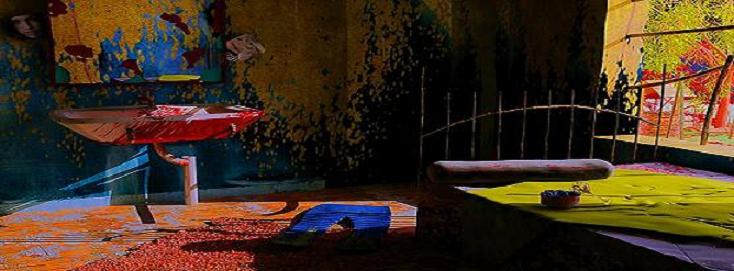Deneme Deneme Deneme Deneme Deneme Deneme Deneme Deneme Deneme Deneme Deneme Deneme Deneme Deneme Deneme Deneme
The director's task is to recreate life: its movement, its
contradictions, its dynamic and conflicts. It is his duty to reveal every
iota of the truth he has seen—even if not everyone finds that truth
acceptable. Of course an artist can lose his way; but even his mistakes
are interesting provided they are sincere, for they represent the
reality of his inner life, of the peregrinations and struggle into which
the external world has thrown him. (And does anyone ever possess
the whole truth?) All debate about what may or may not be shown
can only be a pedestrian and immoral attempt to distort the truth.
Dostoievsky said: They always say that art has to reflect life and all
that. But it's nonsense: the writer (poet) himself creates life such as it
has never quite been before him . . .'
The artist's inspiration comes into being somewhere in the
deepest recesses of his T. It cannot be dictated by external, business
considerations. It is bound to be related to his psyche and his
conscience; it springs from the totality of his world-view. If it is
anything less, then it is doomed from the outset to be artistically
void and sterile. It is perfectly possible to be a professional director
or a professional writer and not to be an artist: merely a sort of
executor of other people's ideas.
True artistic inspiration is always a torment for the artist, almost to
the point of endangering his life. Its realisation is tantamount to a
physical feat. That is the way it has always been, despite the popular
misconception that pretty well all we do is tell stories that are as old as
the world, appearing in front of the public like old grannies with
scarves on our heads and our knitting in our hands to tell them all
sorts of tales in order to keep them amused. The tale may be
entertaining or enthralling, but will do only one thing for the
audience: help them pass the time in idle chatter.
The artist has no right to an idea to which he is not socially
committed, or the realisation of which could involve a dichotomy
between his professional activity and the rest of his life. In our
personal lives we perform actions, as honourable or dishonourable
people. We accept that an honourable action may bring pressure
down on us, or even bring us into conflict with our milieu. Why are
we not prepared for the trouble that can ensue from our professional
activities? Why are we afraid of being called to task when we embark
188
on a film? Why do we start by taking out an insurance so that the
picture will be as innocuous as it is meaningless? Is it not because we
want to receive instant remuneration for our work in the form of cash
and comfort? One can only be staggered by the hubris of modern
artists if we compare them, say, to the humble builders of Chartres
Cathedral whose names arc not even known. The artist ought to be
distinguished by selfless devotion to duty; but we forgot about that a
long time ago.
Directing in the cinema is literally being able to 'separate light
from darkness and dry land from the waters'. The director's power is
such that it can create the illusion for him of being a kind of
demiurge; hence the grave temptations of his profession, which can
lead him very far in the wrong direction. Here we are faced with the
question of the tremendous responsibility, peculiar to cinema, and
almost capital in its implications, which the director has to bear.
His experience is conveyed to the audience graphically and
immediately, with photographic precision, so that the audience's
emotions become akin to those of a witness, if not actually of an
author.
I want to emphasise yet again that, with music, cinema is an art
which operates with reality. That is why I am so against structuralist
attempt to look at a frame as a sign of something else, the
meaning of which is summed up in the shot. The critical methods
of one phenomenon cannot be applied mechanically and indiscriminately
to another, yet that is what such an approach attempts.
Take a particle of music—it is dispassionate, free of ideology. So
too one cinema frame is always a particle of reality, bearing no idea;
only the film as a whole could be said to carry, in a definite sense,
an ideological version of reality. A word on the other hand is itself
an idea, a concept, to some extent an abstraction. A word cannot
be an empty sound.
In Tales of Sevastopol Lev Tolstoy describes the horrors of the
military hospital in realistic detail. However punctilious his account
of these fearful minutiae, however, it is still possible for the reader to
work on the stark, naturalistic pictures, to modify and adapt them
according to his own experience, wishes and views. A text is always
taken selectively by the reader, who relates it to the laws of his own
imagination.
Cinema is the one art form where the author can see himself as the
creator of an unconditional reality, quite literally of his own world.
In cinema man's innate drive to self-assertion finds one of its fullest
and most direct means of realisation. A film is an emotional reality,
and that is how the audience receives it—as a second reality.

Hiç yorum yok:
Yorum Gönder